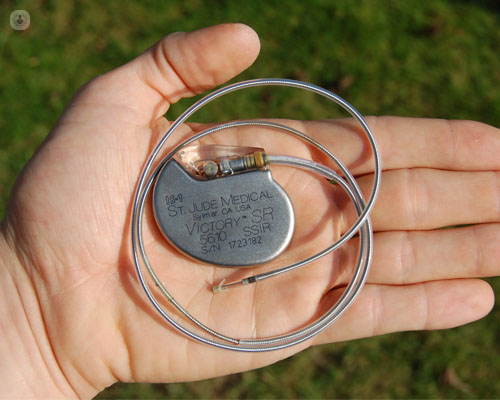Prostate biopsy melt is changing cancer diagnosis
Written by:Prostate cancer is diagnosed by a biopsy through which a sample of the body tissue is examined. Sometimes with this technique the cancer can be overlooked if none of the needles used reaches the affected tissue, in what is known as a false negative. If the doctor suspects that this happens, it may be necessary to repeat the biopsy.
The biopsy of prostate cancer by fusion
The fusion systems are facilitating the diagnosis of prostate cancer by allowing the fusion of the images between the Multiparameter Magnetic Resonance and the transrectal ultrasound that allow the orientation of the biopsy.. Until now, urologists have not been able to use this information effectively when carrying out this test.

In this way, with multiparametric magnetic resonance images of the prostate are obtained where we can appreciate the areas of the prostate where it is suspected that there could be a tumor. These images are then introduced into an adapted ultrasound system that allows the areas of the prostate to be marked that may be affected. Finally the biopsy is done, perineal way - avoiding the rectum.
With this technique, the accuracy of the final results is more than doubled, and only two essential punctures are made, directed directly to the area that may be affected.
Treatment of prostate cancer
The treatment of prostate cancer can end the disease, although it may also be that it remits and that after a while it will appear again.
Conversely, if untreated prostate cancer can spread through the blood and lymph nodes to other parts of the body, such as bones, bladder, rectum, liver, lungs or brain. Even so, it is estimated that 9 out of 10 patients have localized prostate cancer, that is, they do not spread.
The best treatment for localized prostate cancer is still unknown; both the diagnosis and the possible treatments depend on many factors. That is why when a man is diagnosed with this condition he is evaluated as "low risk" or "initial stage", and he goes through a first period of uncertainty in which he will need information and advice.
Risks of prostate cancer treatment
- If the patient chooses a radical option, he will have to accept the possibility of suffering side effects that can alter his quality of life, such as erectile dysfunction or urinary incontinence.
- On the contrary, by choosing the "active surveillance" approach, the patient must agree to live with a prostate cancer and undergo for a time clinical exams, biopsies, etc.
The patient will start the treatment when the urologist evaluates that the cancer has advanced and that the time has come to intervene. However, often the patient does not want to wait for the diagnosis to start treatment to avoid side effects.


